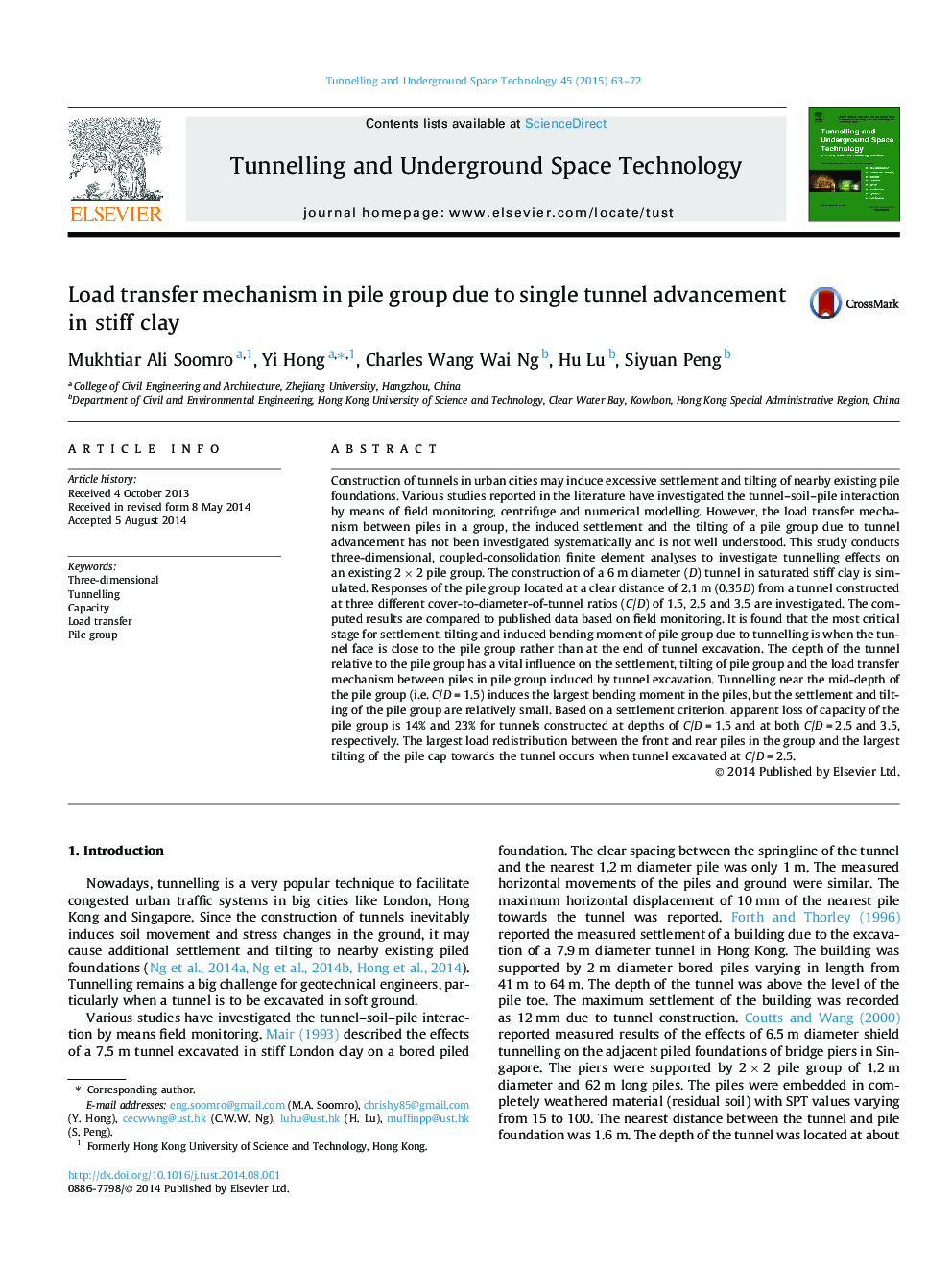| Article ID | Journal | Published Year | Pages | File Type |
|---|---|---|---|---|
| 6784176 | Tunnelling and Underground Space Technology | 2015 | 10 Pages |
Abstract
Construction of tunnels in urban cities may induce excessive settlement and tilting of nearby existing pile foundations. Various studies reported in the literature have investigated the tunnel-soil-pile interaction by means of field monitoring, centrifuge and numerical modelling. However, the load transfer mechanism between piles in a group, the induced settlement and the tilting of a pile group due to tunnel advancement has not been investigated systematically and is not well understood. This study conducts three-dimensional, coupled-consolidation finite element analyses to investigate tunnelling effects on an existing 2Â ÃÂ 2 pile group. The construction of a 6Â m diameter (D) tunnel in saturated stiff clay is simulated. Responses of the pile group located at a clear distance of 2.1Â m (0.35D) from a tunnel constructed at three different cover-to-diameter-of-tunnel ratios (C/D) of 1.5, 2.5 and 3.5 are investigated. The computed results are compared to published data based on field monitoring. It is found that the most critical stage for settlement, tilting and induced bending moment of pile group due to tunnelling is when the tunnel face is close to the pile group rather than at the end of tunnel excavation. The depth of the tunnel relative to the pile group has a vital influence on the settlement, tilting of pile group and the load transfer mechanism between piles in pile group induced by tunnel excavation. Tunnelling near the mid-depth of the pile group (i.e. C/DÂ =Â 1.5) induces the largest bending moment in the piles, but the settlement and tilting of the pile group are relatively small. Based on a settlement criterion, apparent loss of capacity of the pile group is 14% and 23% for tunnels constructed at depths of C/DÂ =Â 1.5 and at both C/DÂ =Â 2.5 and 3.5, respectively. The largest load redistribution between the front and rear piles in the group and the largest tilting of the pile cap towards the tunnel occurs when tunnel excavated at C/DÂ =Â 2.5.
Related Topics
Physical Sciences and Engineering
Earth and Planetary Sciences
Geotechnical Engineering and Engineering Geology
Authors
Mukhtiar Ali Soomro, Yi Hong, Charles Wang Wai Ng, Hu Lu, Siyuan Peng,
